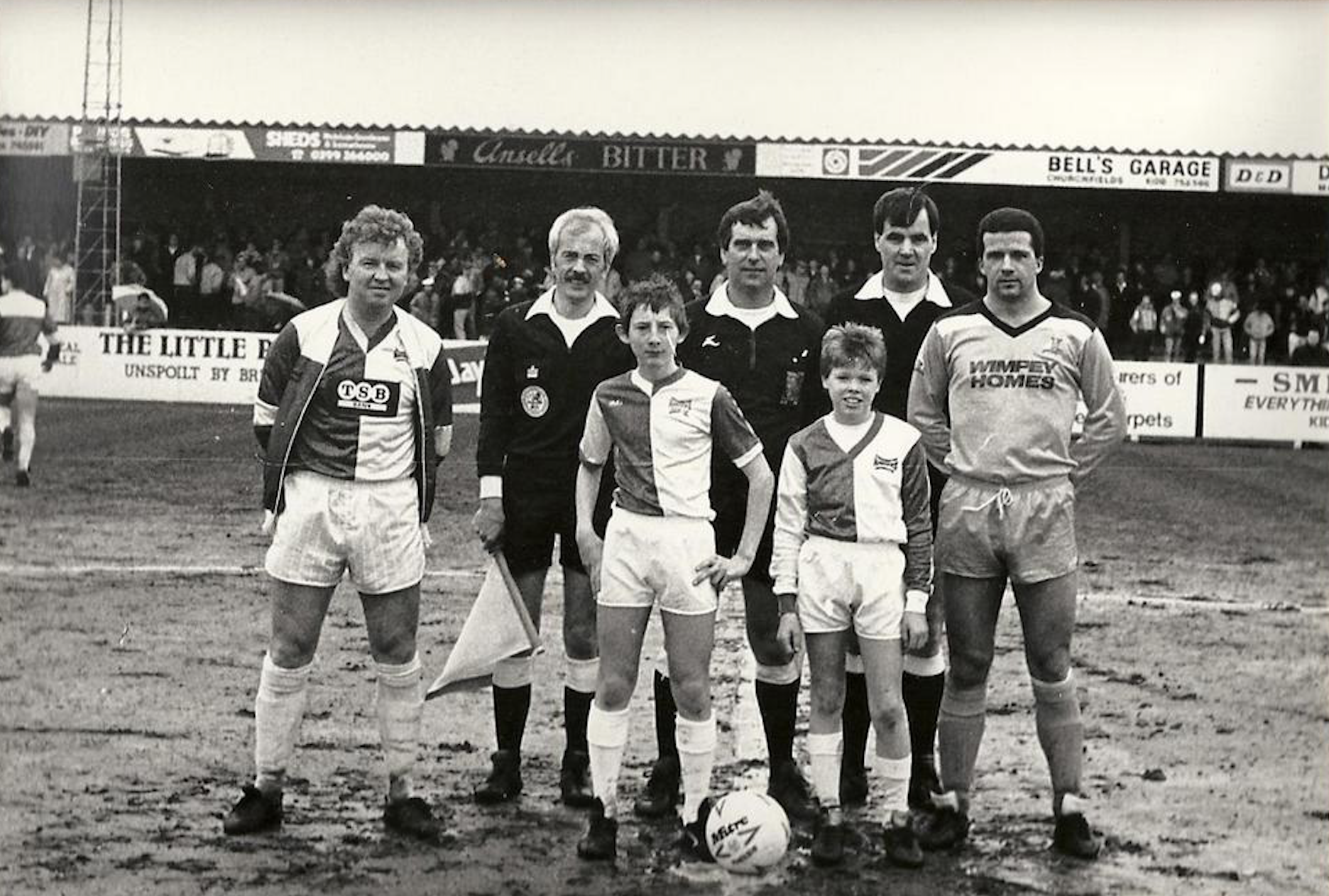The long goodbye

Words: Mike Bayly
Images: Mike Bayly
When Scunthorpe United opened Glanford Park in 1988, it was the first purpose-built Football League ground in over three decades.
Since then, driven by the Taylor Report recommendations and increasing commercialisation of the game, almost half of the current Premier and Football League clubs have moved to new homes.
Of the original remaining grounds, nearly all have been altered beyond recognition.
A similar trend can be found throughout the non-League pyramid, where increased opportunities for promotion and the need for enhanced spectator facilities have prompted a ground improvements arms race, sometimes at the expense of important historical features.
This accelerated nature of change was a theme I touched on in British Football’s Greatest Grounds. Released in 2021, the book captured an irretrievable point in time.
In the four years following publication, roughly a tenth of the featured grounds are either disused, redeveloped, demolished or scheduled for closure. Based on prevailing trends, the number will continue to rise exponentially.
©Mike Bayly/ Terrace Edition. Workington AFC vs Ashton United.
Should I write a retrospective follow-up in the twilight years of my life, I fear it would contain a lengthy obituary list.
One of the grounds in the book scheduled for redevelopment is Workington AFC’s Borough Park. Opened in 1937, Borough Park was soon hosting large crowds, something that may have influenced the Football League’s decision to elect them to the Third Division North in 1951 at the expense of New Brighton.
It initiated a period of huge cultural significance. The relatively unknown Bill Shankly joined as manager in January 1954 becoming Workington’s chief factotum, acting as coach, wage-payer and occasional secretary, before leaving for Huddersfield Town in November 1955.
On 4 January 1958, A record crowd of 21,000 saw Workington host Manchester United’s Busby Babes in the third round of the FA Cup for an encounter tinged with pathos.
The game took place barely a month before the Munich Air Disaster. United’s 3-1 win at Borough Park was one of the last times the British public would see this famous team together.
©Mike Bayly/ Terrace Edition. Workington AFC vs Ashton United.
After finishing bottom of the Fourth Division for a second consecutive season in 1977, Workington were voted out of the Football League and replaced by Wimbledon.
Professional football has never returned to Borough Park. Indeed, they haven’t troubled non-League football’s top tier since 1979, briefly dropping as far as the North West Counties League in 1998.
Like Dulwich Hamlet’s Champion Hill or Benburb’s Tinto Park, Borough Park was a stadium built for a vanished era of football support; a glorious interwar relic of wilting grandeur - too big and costly for a semi-professional club stuck out on a geographical limb and patronised by a few hundred diehards.
Talk of replacing or upgrading the cavernous venue on the West Cumbrian coast has circulated for years. Proposals for a council-funded 8000-capacity community stadium were scaled back in 2019 due to financial concerns.
Yet, in 2023 plans were firmed up for the Cumberland Sports Village, a multi-purpose ground built on the footprint of Borough Park and serving as home to Workington AFC and Workington Town Rugby League FC.
In February of this year, BBC News announced demolition work would begin this month. Workington would continue at the site using temporary facilities, with the new stadium opening date set for August 2026.
©Mike Bayly/ Terrace Edition. Workington AFC vs Ashton United.
The announcement of Borough Park’s overhaul triggered an emotional response in the wider football community.
The objective drawbacks that necessitate Workington’s new ground – open air terraces, ageing infrastructure, holes in the main stand roof – also make it so precious, especially in era of bland cookie-cutter stadia design.
Borough Park was seemingly born with an archaic veneer (Stephen F. Kelly’s Shankly biography recalls Borough Park of the 1950s ‘as antiquated a ground as any in the Football League’, barely a decade after opening) and with little of the fundamental layout changed in 80 years, enthusiasts rushed to experience one of England’s last remaining old-fashioned football venues.
Although I visited a few years ago when researching my book, I felt duty-bound to make another long trip to Cumbria.
Workington’s final game of the season at home to Ashton United was, from a football perspective at least, of little consequence. Workington were safe from relegation and Ashton United guaranteed a fifth-place play-off spot.
Among the crowd of 1031 – the second biggest home league attendance of the season – were a large contingent of rucksack-wearing neutrals.
©Mike Bayly/ Terrace Edition. Workington AFC vs Ashton United.
I met fans of Hallam, Blackburn Rovers and Coventry City, all their paying final respects.
The terraces, broad enough to sit and stretch out on, were scattered with families, groups of friends, lone groundhoppers and the inevitable collection of doe-eyed dogs, taking in the afternoon’s events in a relaxed manner that would seem inconceivable in a modern ground.
Non-League football can be emotionally draining, boisterous, and frenetic.
It can also offer a place of solace and relaxation, a comforting, semi-permanent background noise, like the soft avuncular tones of a veteran radio host drifting through a neighbouring window into your garden on a summer’s day.
With every ground like Borough Park that disappears, something visceral is lost in how we enjoy and experience our national game.
Whether Workington have indeed played their final fixture at Borough Park in its current guise is unclear. Speaking to a club official on the day, details and timings are still being finalised.
Either way, it was almost certainly my own goodbye to the ground. It is easy to become nostalgic or even recalcitrant where change is concerned, but in older age I’ve learned to accept things cannot stay the same forever.
©Mike Bayly/ Terrace Edition. Workington AFC vs Ashton United.
When pondering the nature of change, I draw on a Christopher Hitchen’s lecture, where he cites Sir Martin Rees, then professor of cosmology and astrophysics at Cambridge University. “It will not be humans who watch the sun’s demise, six billion years from now. Any creatures that then exist will be as different from us as we are from bacteria or amoebae.”
If mankind and our heavenly bodies are preordained for unfathomable evolution and destruction, what chance does a non-League football ground have staying the same?
Despite these faits accomplis, the past shouldn’t be forgotten. Borough Park has been a much-loved part of local life for generations and deserves to be acknowledged for what it was as much as what it will be.
I think of places like Dudley Town’s Sports Ground, Walthamstow Avenue’s Green Pond Road, Bedford Town’s Eyrie Ground or Tooting & Mitcham’s Sandy Lane where all that survive are a few low-resolution images and brief Pathe news reels.
For some of our lost grounds, there are no visual records at all. At least Borough Park has been well documented. Workington’s ground may be changing, but the memory of what came before will surely live on.
©Mike Bayly/ Terrace Edition. Workington AFC vs Ashton United.
©Mike Bayly/ Terrace Edition. Workington AFC vs Ashton United.
©Mike Bayly/ Terrace Edition. Workington AFC vs Ashton United.
©Mike Bayly/ Terrace Edition. Workington AFC vs Ashton United.
©Mike Bayly/ Terrace Edition. Workington AFC vs Ashton United.
©Mike Bayly/ Terrace Edition. Workington AFC vs Ashton United.
©Mike Bayly/ Terrace Edition. Workington AFC vs Ashton United.
©Mike Bayly/ Terrace Edition. Workington AFC vs Ashton United.
Mike is on X and Instagram: @mike_bayly
Workington AFC’s website is www.workingtonafc.com


















